‘Like being inside a Lego brick’: my week driving Citroen’s (very) tiny EV
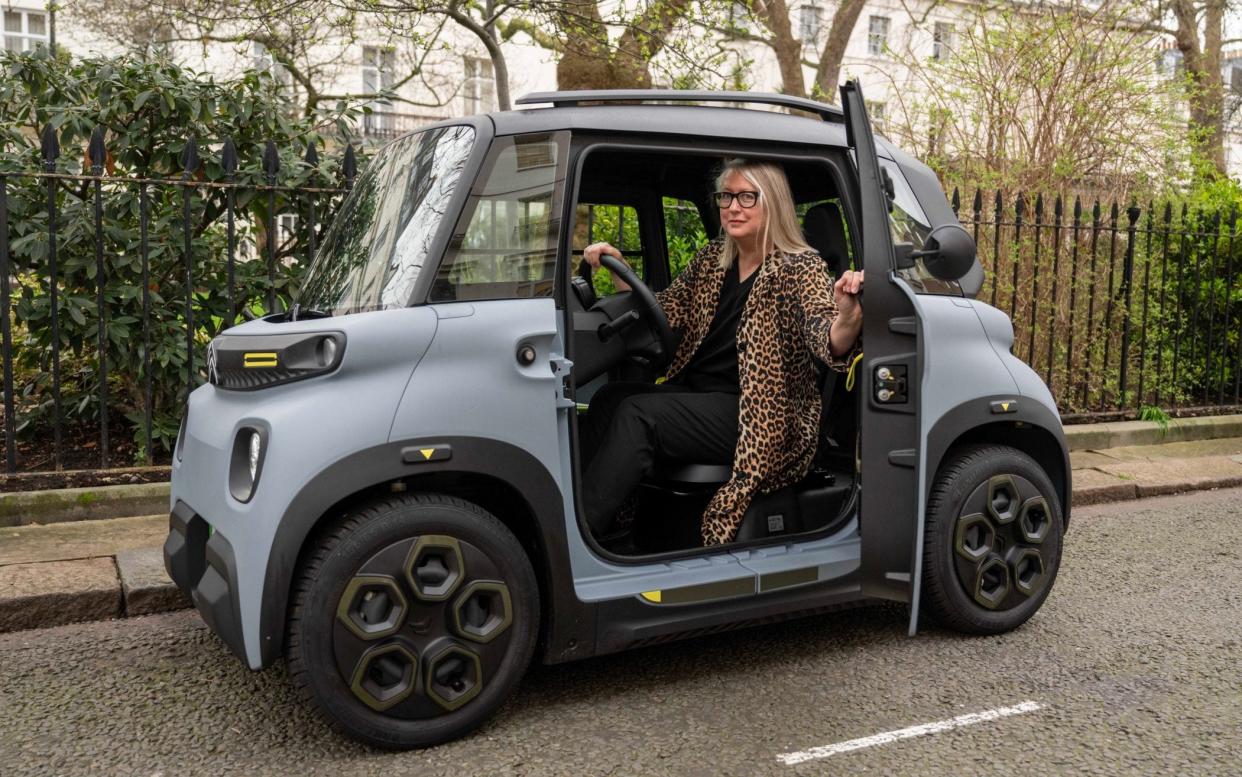
We’re doing electric cars all wrong. Instead of great big heavy monsters that may, or may not, have a range of 200-plus miles and all the bells and whistles to satisfy a petrolhead, we should be thinking – make it smaller, lighter, slower.
Before you’re totally enraged, bear this in mind – I’m talking about cars for cities. If you live outside a city, by all means have a big electric car (if you’ve got a big electric budget). But I’m not convinced that most people who go on and on about range anxiety and not being able to drive from Penzance to Cambridge without struggling to find a charger ever really *do* want to drive all that way. It’s the idea of not being able to do it that gets them all worked up.
Me, I just want something to get to and from work, around the shops and into and out of the city centre (yes, I live in London). Which is why I’ve driven the same tiny, tinny electric vehicle for the last 15 years (you can read about it here).
The reality for anyone who does live in a built-up area is that the distances travelled are quite small and that the speed limit is likely to be 30mph or, increasingly, 20mph, so there’s new (or renewed for us early adopters) interest in the smaller end of the market. There’s real demand for such tiddlers, with a wait of six weeks from order for the Citroen Ami.
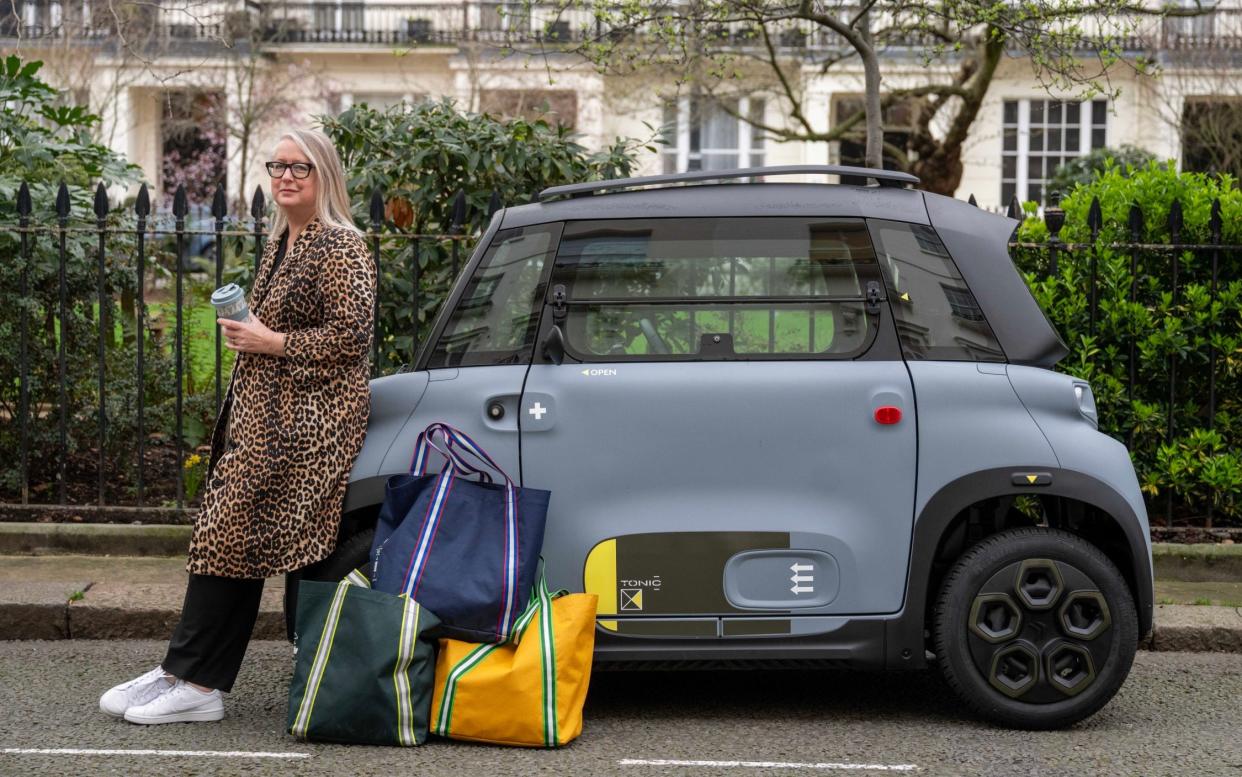
I’d heard and read about the vehicle - not least in the Telegraph - but I first saw them in action tootling around on the tarmac at Funchal airport in Madeira last winter. Staff were using the tiny vehicle to nip between planes; and they had solar panels on their roofs - neat. All fine and well away from other traffic and with barely any range required … but what about in real life?
I left my antique electric GWiz parked up for a week to see how the new-gen version would suit my life. Someday soon I will have to give up on my beloved “rollerboot” because it’s falling apart, bit by bit. Call me Pollyanna but it has been a brilliant method of transport for all these years so I have no complaints, it has done me proud.
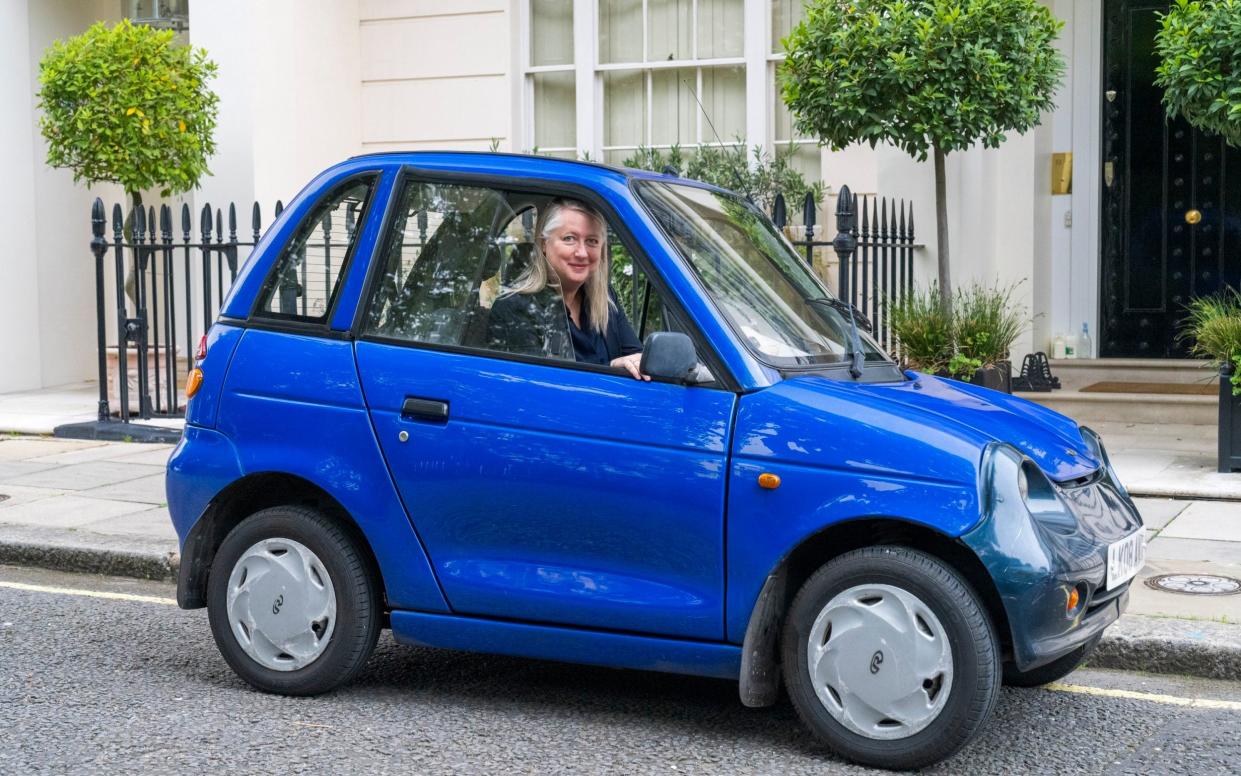
When I wrote about how I used it to transport my children, I had comments declaring that I was an unfit mother for putting them at risk by driving such a flimsy vehicle. And yet, here we all are, still alive and well. I’ve never had a serious collision – I know what the effect of that would be and drive accordingly; an approach many more of us could do with adopting, whatever size and heft of our car.
I’ve seen the Citroen Ami described as an “ultra compact urban vehicle” which, let’s face it, is sexier than “electric quadricycle” (it’s actual description). I’ve never been car-proud but it takes some getting used to. You’ll note from these photographs that it’s a curious cube (measuring 2.4m long, 1.4m wide and 1.5m high) and looks the same from either end and either side. Unlike my GWiz, which seeks to emulate actual cars by having upholstered seats, a rear-view mirror and a modest “boot” (in its case, where the engine usually sits), the Ami revels in its utilitarianism. It’s rather like being inside a Lego brick - all hard surfaces and with curious plastic “storage solutions”.
This makes it a driving experience that takes some getting used to. I sit slap bang in the centre of the cube, equidistant from front and back, so the windscreen is out of reach (and has no rear-view mirror). The driver’s seat is to the left, with a single passenger seat to the right and slightly behind, giving me strong Uber driver vibes. Maybe that’s useful if there’s a nascent demand for solo taxi lifts?
The driver’s door is what used to be called, in the bad old days, a suicide door, because it’s hinged to open backwards. With the Ami, both exits being hinged on the right is a budget feature (if a part gets damaged, there’s only one version to replace, which cuts costs). I quickly get used to being extra-vigilant when opening the door!
Because of the lack of rear-view mirror (deemed unnecessary due to the Ami’s diminutive size, apparently) I rely heavily on the door-mounted ones, but they’re tiny, smaller than my make-up compact. That means I’m on high alert the entire time that I’m driving, but maybe that’s no bad thing (we all know that distracted drivers can be lethal). In fact, there are no distractions – unless you configure the Ami with add-ons to be able to play music. There is no dash-mounted touchscreen the size of a pro-laptop that you get in most recent cars.
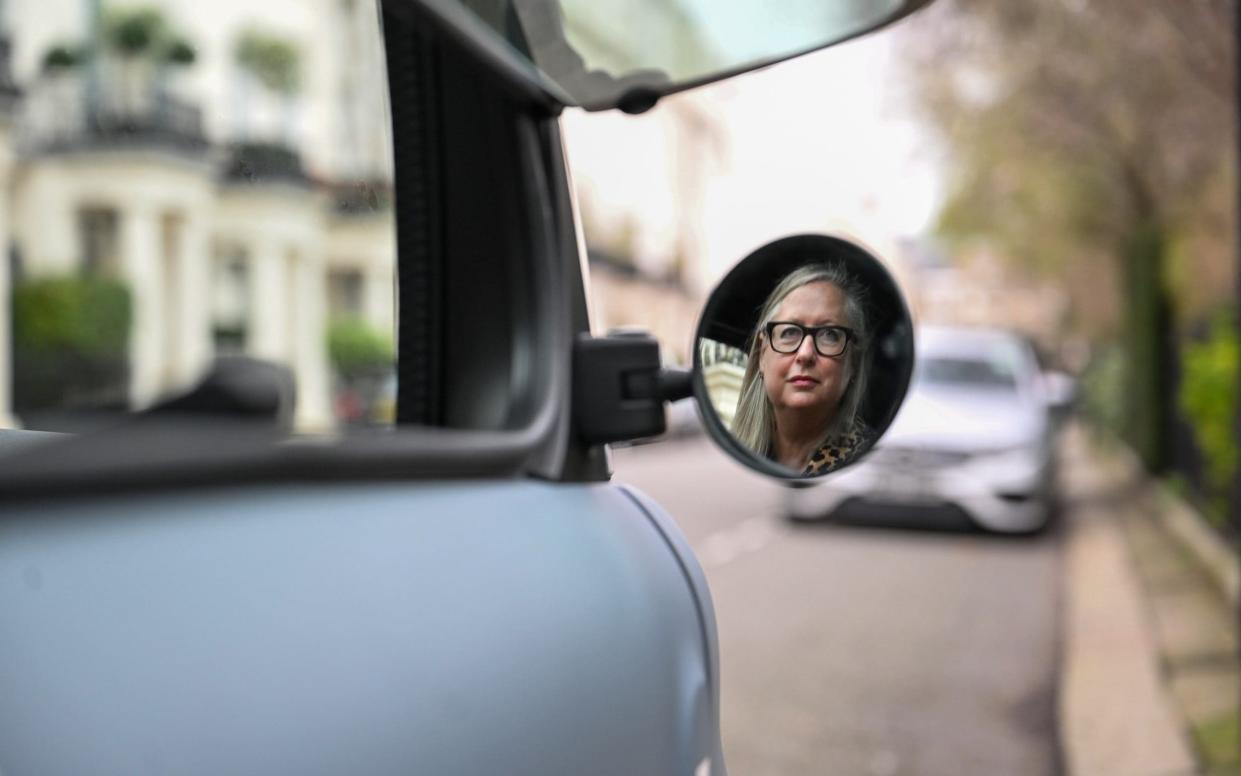
Driving around with my husband, we found ourselves reaching for our sunglasses, such is the vast amount of window glass. The almost completely clear roof can, if the sun hits right, make it very dazzling and hard to read the digital speedometer - which is otherwise clear and useful (any driver of an electric vehicle knows to keep an eye on the amount of battery charge remaining).
But to focus on the battery for a moment – with a range of 45 miles and city-centre speed limits – I get days and days of driving without any “range anxiety”. It’s a nippy little creature, for sure, so getting up to 20mph is sometimes alarmingly easy but I still get almost an entire week of commuting and nipping to the shops before I’m looking for an on-street plug-point.
Even if I was based in a town like the one in Wiltshire where my sister lives I’d still be able to go to the retail park miles away and come back laden without any stress – and I’d have a driveway at home to park and charge on. Worth thinking about.
Another reason to get along well with this chunk of utility driving is my fellow road users. Being slightly closer to the kerb thanks to the pan-European driving position, I’m more aware of cyclists and – thanks to the minuscule size of the Ami – can give them a wide berth without veering into oncoming traffic.

You might grind your teeth at the idea of giving space to the Lycra-clad warriors on two wheels, but in any conurbation we all need to get along and without incident, if possible. At the very least, I don’t want to be tapping anything because it’ll knock those dinky wing mirrors out of whack and to reposition them means flipping up the very analogue windows, which are themselves a bit, um, flimsy. They’re a nod to the inspiration, the famously quirky Citroen 2CV.
Am I allowed to be picky while driving something that - if it has a life as long as my GWiz - would work out at an outlay of £500 per year (excluding insurance and servicing)? If so, little details such as the indicator not clicking off when you’ve completed a turn drives me slightly mad. And while I love the neon yellow nylon pull-tags to open the doors, they require a decent yank. I’m used to being able to stash anything I don’t want stolen in hidden storage; the Ami doesn’t have that feature, but having said that, there is certainly plenty of space in the passenger side footwell for shopping – it handled my weekly groceries easily.
Being a long-time veteran of driving a vehicle that’s largely seen as a curiosity, even an irritant, I’m used to pointing fingers, outright laughter and the occasional request for more information about “that thing you’re driving”, but I didn’t get any of that with the Ami, despite it still being a relatively rare sighting in our cities.
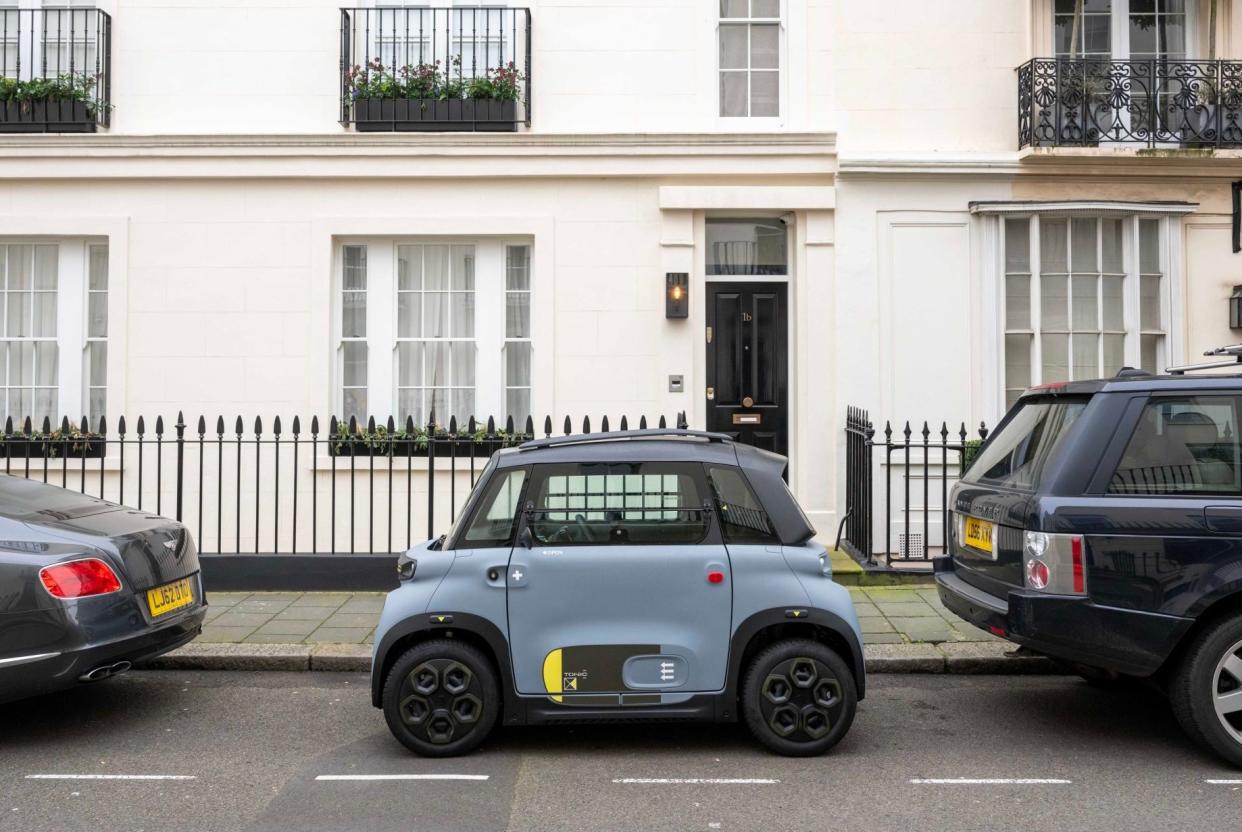
Is it because in the age of myriad e-scooters, motorbikes with canopies, three-wheeler open-sided cars and goodness knows what else, this battery-powered beetle isn’t that remarkable? I hope so. I’m definitely considering the Ami, sooner rather than later. As long as I’m a city-dweller, this is for me. Maybe you too? My now grown-up daughter needs to learn to drive and I think it’s a brilliant solution for transport that’s economical in every way – no parking panic when it turns on a sixpence and fits sideways into any bay.
As Citroen itself says in its Ami marketing information: “Like the original 2CV mobilised the masses of the past, Ami brings electric mobility to the masses of today.” Masses might be stretching it a bit, even if it’s the talk of the urban EV enthusiasts.
I’d like nothing more than to live in a city of near silence, with small vehicles trundling around politely, sharing parking spaces and charging points. But I suspect human nature won’t get everyone on board … yet.


